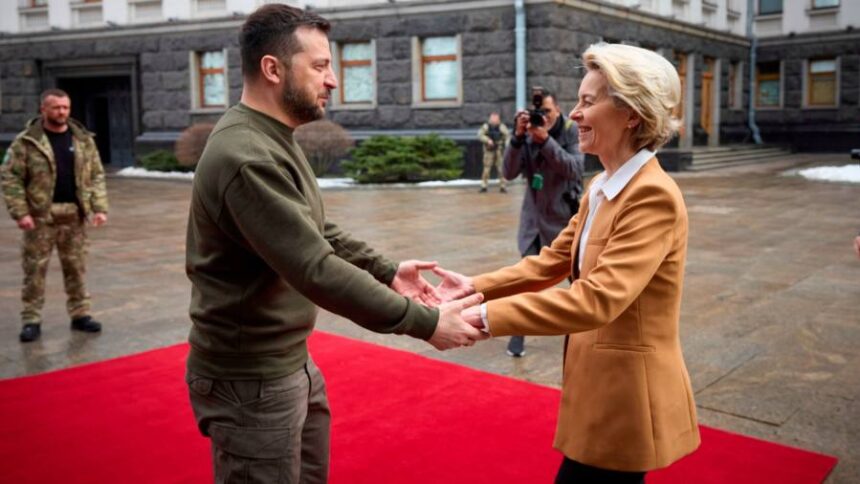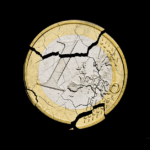Receive free European Union updates
We’ll send you a myFT Daily Digest email rounding up the latest European Union news every morning.
The writer is an FT contributing editor and writes the Chartbook newsletter
At moments of stress, the EU invokes Jean Monnet’s maxim that Europe will be forged in crisis and will be the sum of the solutions adopted to address those crises. That is comforting when you are in the thick of it. But when you emerge from the state of emergency, as Europe seems to be doing this summer, it forces the question: what crisis comes next and what will be the solution?
Sometimes this questioning of Europe’s future is a distraction. To think always in terms of crisis — as in the anglosphere’s endless scepticism towards the euro — underestimates resilience. But, sometimes, it is precisely the right question to ask.
Since 2019, under Ursula von der Leyen’s surprisingly powerful European Commission, the “EU fix” has consisted of forward-looking investment in digital infrastructure and the green energy transition. Faced with the pandemic, this formula united Europe around common borrowing. It has since been adapted to meet Vladimir Putin’s aggression in Ukraine, the challenge of America’s Inflation Reduction Act and escalating tension with China.
Paradoxically, the very success of this strategy leads conservatives to imagine Europe’s future lies in returning to a normality defined by fiscal rules dating back to the early 1990s. This is wishful thinking. It may be dangerously complacent to say so, but a repeat of the eurozone crisis of the 2010s is not Europe’s main worry right now. No doubt a big banking or public debt crisis would find Europe’s fiscal and monetary architecture wanting. The fiscal rules and the role of the European Stability Mechanism remain contentious. But bond markets are calm and Europe weathered the US and Swiss banking crises this year well.
An escalating refugee crisis in the Mediterranean is a bigger immediate risk. It is with good reason that diplomacy with Tunisia’s unappetising government has shifted into high gear. Nor is it coincidence that Germany and Italy are pushing a hydrogen pipeline that offers development prospects for north Africa. Extending the NextGenerationEU investment agenda to the wider Mediterranean would be logical. A rational long-term strategy would envision a managed migration programme, backed by substantial public investment.
The chances of realising that kind of pragmatic sustainable development thinking depends on not crushing Europe’s economy with arbitrary and decades-old fiscal rules. It also depends on preserving a political balance. It was the centrists’ political victory in 2019 that allowed Brussels to promote climate to the heart of the European project. A lurch to the right in the 2024 European elections would put von der Leyen’s formula in question.
Vox’s failure in Spain has for now allayed fears of a nationalist populist surge. But their challenge dragged the entire agenda of Spanish politics to the right. And the same appears to be happening with the CDU in Germany under pressure from the AfD. As the centre-right in the European parliament showed in their abortive effort to sabotage the nature restoration law, von der Leyen’s own party cannot be counted on to support the green agenda in the face of farmer protest.
After the political investment of the past five years, a rightwing lurch that stunted Europe’s green programme would be tantamount to an identity crisis for the EU. A further escalation of xenophobia at the same moment — with Italy’s Giorgia Meloni rather than von der Leyen as the champion — is a very ugly prospect.
In the election to the parliament in 2024, Europe’s voters will make an important choice on climate and refugees. But it is another challenge that is even more decisive in defining Europe’s future.
Before 2022, Brussels, Paris and Berlin all preferred to hold Ukraine at arms-length. Putin’s aggression has robbed them of that option. Ukraine’s EU accession is now squarely on the agenda. It is arguably the most daunting challenge the EU has ever faced. The €70bn in combined civilian and military aid currently under discussion are just the beginning. Estimates of the eventual spending required run to more than €400bn for a state that is not yet a member of the bloc.
One can imagine stretching the Green Deal investment formula even over Ukraine. But that does no justice to the fundamental political decision that will be necessary to accommodate a war-battered nation of 38mn as an EU member. The first decision will come in October on Ukraine’s progress towards accession negotiations. If we apply Monnet’s maxim, it is the solutions found or not to the Ukraine crisis that will define the EU for the foreseeable future.








